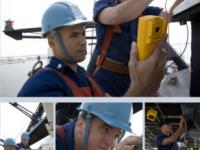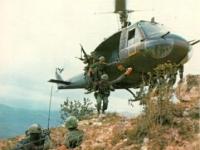Underwater Welding Training CD
Comes in Clear Jewel Case. Photo Art is example only.
Start Training For A Great New Career As An Underwater Welder Today!
Both The Government And The Private Sector
Are Looking For Underwater Welders!
Underwater welders perform a variety of tasks that are constantly in demand. When you learn this trade, you will be able to help private and public contractors with much needed salvage work. You will also be able to help repair hulls and other boat sections that need to remain underwater.
You could actually help save lives!
The best part of this exciting career is that few people have these much needed skills. It can cost hundreds of dollars and dozens of hours of classroom time to learn these skills - and that is not practical for most people!
Yet with this incredible course, you can learn these skills and train for an exciting new job on your own time - from the privacy of your own home!
Sample thumbnails taken from the collection. Click on image to view larger picture.
screen shot 1
screen shot 2
screen shot 3
screen shot 4
screen shot 5
screen shot 6
This Course Was Designed By The United States
Navy To Train Their Own Personnel To Handle Any
Underwater Emergency!
This incredible, easy to follow study course was designed by the United States Navy in order to train their personnel. As I am sure you know, the Navy has to train soldiers from a variety of educational backgrounds. Therefore they need to make sure their training documents can be understood by virtually anyone. Yet, because the Navy is responsible for our national security, they also have to make sure that when their men and women finish the course, they are true experts.
"I received the CDs today and I was so excited browsing through them! I can t believe how extensive they are! I am so happy with this purchase! Thank you for these incredible CDs!"
Gina Otto, Brownsville, OR
This Guide Is Broken Down Into Four
Easy To Follow Chapters!
This 200 page manual is divided into four chapters intended to provide information on the use of conventional techniques for cutting and welding metals underwater. It is written for the U.S. Navy diver who specializes in ship salvage and harbor clearance operations. Divers who perform underwater cutting and welding must have greater skill and stamina than those doing the same work topside.
The success and speed of operations depend upon the conditions under which the diver must work, because the underwater environment imposes numerous limitations and restrictions on the operator and equipment. The diver is often restricted to working for only a short time on the bottom, particularly at deeper depths. The use of correct technique and equipment becomes extremely important in terms of work accomplished per hour. Diving apparel, great depth, adverse currents, low temperature, lack of visibility and unstable footing are all factors which make underwater cutting and welding difficult.
Here is a complete list of what is covered in each section of this great course:
1 INTRODUCTION
1-1 SCOPE..................................................................... 1-1
1-2 UNDERWATER CUTTING OVERVIEW................................................. 1-1
1-3 UNDERWATER WELDING OVERVIEW ................................................. 1-2 2 UNDERWATER CUTTING
2-1 INTRODUCTION .............................................................................. 2-1
2-2 OXYGEN-ARC CUTTING .......................................................................... 2-2
2-2.1 Principles of Operation .................................................................................. 2-2
2-2.2 Steel-Tubular Electrodes................................................................................ 2-2
2-2.2.1 Advantages of the Steel-Tubular Electrodes ................................................. 2-5
2-2.2.2 Disadvantages of the Steel-Tubular Electrode............................................... 2-5
2-2.3 Electrode Amperage Requirements ............................................................... 2-5
2-2.4 Oxygen Requirements.................................................................................... 2-6
2-2.5 Material Consumption ................................................................................... 2-6
2-2.6 Oxygen Pressure ............................................................................................ 2-6
2-2.7 Oxygen Purity .............................................................................................. 2-11
2-2.8 Grounding the Work .................................................................................... 2-11
2-2.9 Steel-Tubular Electrode Cutting Technique (Thick plate) .......................... 2-11
2-2.10 Steel-Tubular Electrode Cutting Technique (Thin plate) ............................ 2-15
2-2.11 Piercing Holes in Steel Plate........................................................................ 2-15
2-2.12 Steel-Tubular Electrode Cutting Technique (Cast Iron and Non-Ferrous Metals) ......... 2-18
2-2.13 Post-dive Maintenance................................................................................. 2-18
2-3 EXOTHERMIC ELECTRODES................................................................. 2-22
2-3.1 Electrode Amperage Requirements ............................................................. 2-22
2-3.2 Oxygen Requirements.................................................................................. 2-25
2-3.3 Material Consumption ................................................................................. 2-25
2-3.4 Advantages and Disadvantages of the Exothermic Electrode Cutting Process ............... 2-25
2-3.4.1 Disadvantages of Exothermic Electrodes .................................................... 2-27
2-3.5 Grounding the Work .................................................................................... 2-27
Exothermic Cutting Technique .................................................................... 2-28
2-3.6.1 Exothermic Cutting Technique (Cast Iron, Stainless Steel and Non-Ferrous Metals)......... 2-30
2-3.6.2 Exothermic Cutting Technique (Concrete, Rock and other Non-Conductive Materials) ........ 2-31
2-3.6.3 Exothermic Hole Piercing............................................................................ 2-31
2-3.7 Trouble Shooting.......................................................................................... 2-31
2-3.7.1 Symptoms .................................................................................................... 2-31
2-3.7.2 Probable Causes........................................................................................... 2-32
2-3.7.3 Locating and Solving the Problem............................................................... 2-32
2-3.8 Post-Dive Maintenance................................................................................ 2-33
More description but limited here on text.
Comes in Clear Jewel Case. Photo Art is example only.
Start Training For A Great New Career As An Underwater Welder Today!
Both The Government And The Private Sector
Are Looking For Underwater Welders!
Underwater welders perform a variety of tasks that are constantly in demand. When you learn this trade, you will be able to help private and public contractors with much needed salvage work. You will also be able to help repair hulls and other boat sections that need to remain underwater.
You could actually help save lives!
The best part of this exciting career is that few people have these much needed skills. It can cost hundreds of dollars and dozens of hours of classroom time to learn these skills - and that is not practical for most people!
Yet with this incredible course, you can learn these skills and train for an exciting new job on your own time - from the privacy of your own home!
Sample thumbnails taken from the collection. Click on image to view larger picture.
screen shot 1
screen shot 2
screen shot 3
screen shot 4
screen shot 5
screen shot 6
This Course Was Designed By The United States
Navy To Train Their Own Personnel To Handle Any
Underwater Emergency!
This incredible, easy to follow study course was designed by the United States Navy in order to train their personnel. As I am sure you know, the Navy has to train soldiers from a variety of educational backgrounds. Therefore they need to make sure their training documents can be understood by virtually anyone. Yet, because the Navy is responsible for our national security, they also have to make sure that when their men and women finish the course, they are true experts.
"I received the CDs today and I was so excited browsing through them! I can t believe how extensive they are! I am so happy with this purchase! Thank you for these incredible CDs!"
Gina Otto, Brownsville, OR
This Guide Is Broken Down Into Four
Easy To Follow Chapters!
This 200 page manual is divided into four chapters intended to provide information on the use of conventional techniques for cutting and welding metals underwater. It is written for the U.S. Navy diver who specializes in ship salvage and harbor clearance operations. Divers who perform underwater cutting and welding must have greater skill and stamina than those doing the same work topside.
The success and speed of operations depend upon the conditions under which the diver must work, because the underwater environment imposes numerous limitations and restrictions on the operator and equipment. The diver is often restricted to working for only a short time on the bottom, particularly at deeper depths. The use of correct technique and equipment becomes extremely important in terms of work accomplished per hour. Diving apparel, great depth, adverse currents, low temperature, lack of visibility and unstable footing are all factors which make underwater cutting and welding difficult.
Here is a complete list of what is covered in each section of this great course:
1 INTRODUCTION
1-1 SCOPE..................................................................... 1-1
1-2 UNDERWATER CUTTING OVERVIEW................................................. 1-1
1-3 UNDERWATER WELDING OVERVIEW ................................................. 1-2 2 UNDERWATER CUTTING
2-1 INTRODUCTION .............................................................................. 2-1
2-2 OXYGEN-ARC CUTTING .......................................................................... 2-2
2-2.1 Principles of Operation .................................................................................. 2-2
2-2.2 Steel-Tubular Electrodes................................................................................ 2-2
2-2.2.1 Advantages of the Steel-Tubular Electrodes ................................................. 2-5
2-2.2.2 Disadvantages of the Steel-Tubular Electrode............................................... 2-5
2-2.3 Electrode Amperage Requirements ............................................................... 2-5
2-2.4 Oxygen Requirements.................................................................................... 2-6
2-2.5 Material Consumption ................................................................................... 2-6
2-2.6 Oxygen Pressure ............................................................................................ 2-6
2-2.7 Oxygen Purity .............................................................................................. 2-11
2-2.8 Grounding the Work .................................................................................... 2-11
2-2.9 Steel-Tubular Electrode Cutting Technique (Thick plate) .......................... 2-11
2-2.10 Steel-Tubular Electrode Cutting Technique (Thin plate) ............................ 2-15
2-2.11 Piercing Holes in Steel Plate........................................................................ 2-15
2-2.12 Steel-Tubular Electrode Cutting Technique (Cast Iron and Non-Ferrous Metals) ......... 2-18
2-2.13 Post-dive Maintenance................................................................................. 2-18
2-3 EXOTHERMIC ELECTRODES................................................................. 2-22
2-3.1 Electrode Amperage Requirements ............................................................. 2-22
2-3.2 Oxygen Requirements.................................................................................. 2-25
2-3.3 Material Consumption ................................................................................. 2-25
2-3.4 Advantages and Disadvantages of the Exothermic Electrode Cutting Process ............... 2-25
2-3.4.1 Disadvantages of Exothermic Electrodes .................................................... 2-27
2-3.5 Grounding the Work .................................................................................... 2-27
Exothermic Cutting Technique .................................................................... 2-28
2-3.6.1 Exothermic Cutting Technique (Cast Iron, Stainless Steel and Non-Ferrous Metals)......... 2-30
2-3.6.2 Exothermic Cutting Technique (Concrete, Rock and other Non-Conductive Materials) ........ 2-31
2-3.6.3 Exothermic Hole Piercing............................................................................ 2-31
2-3.7 Trouble Shooting.......................................................................................... 2-31
2-3.7.1 Symptoms .................................................................................................... 2-31
2-3.7.2 Probable Causes........................................................................................... 2-32
2-3.7.3 Locating and Solving the Problem............................................................... 2-32
2-3.8 Post-Dive Maintenance................................................................................ 2-33
More description but limited here on text.
- Brand A2ZCDS
- Mfg Part # 31396-4668
Payment Methods


Shipping
$3.00
Please Login or Register first before asking a question.


































